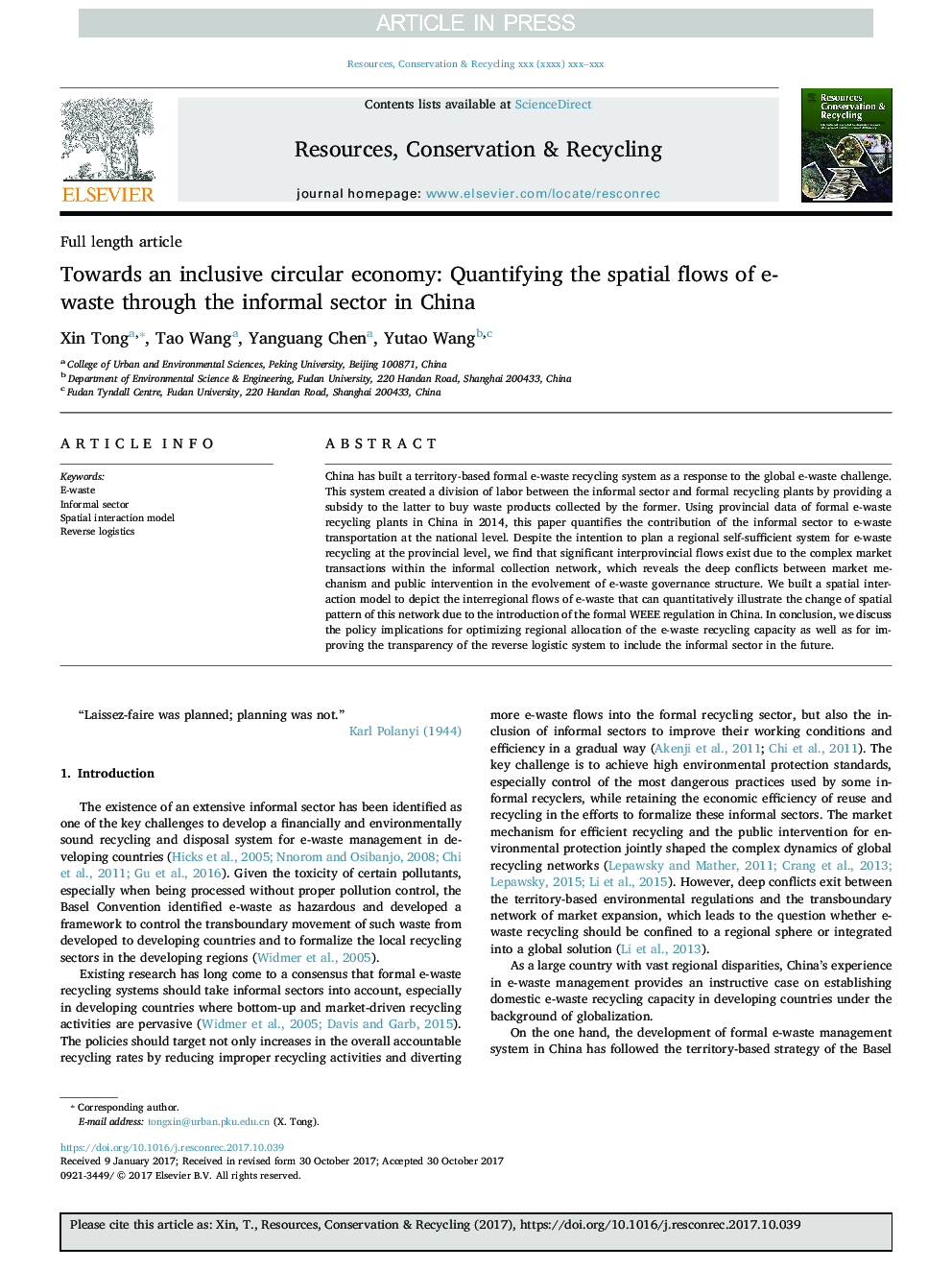| Article ID | Journal | Published Year | Pages | File Type |
|---|---|---|---|---|
| 7494034 | Resources, Conservation and Recycling | 2018 | 9 Pages |
Abstract
China has built a territory-based formal e-waste recycling system as a response to the global e-waste challenge. This system created a division of labor between the informal sector and formal recycling plants by providing a subsidy to the latter to buy waste products collected by the former. Using provincial data of formal e-waste recycling plants in China in 2014, this paper quantifies the contribution of the informal sector to e-waste transportation at the national level. Despite the intention to plan a regional self-sufficient system for e-waste recycling at the provincial level, we find that significant interprovincial flows exist due to the complex market transactions within the informal collection network, which reveals the deep conflicts between market mechanism and public intervention in the evolvement of e-waste governance structure. We built a spatial interaction model to depict the interregional flows of e-waste that can quantitatively illustrate the change of spatial pattern of this network due to the introduction of the formal WEEE regulation in China. In conclusion, we discuss the policy implications for optimizing regional allocation of the e-waste recycling capacity as well as for improving the transparency of the reverse logistic system to include the informal sector in the future.
Related Topics
Physical Sciences and Engineering
Energy
Renewable Energy, Sustainability and the Environment
Authors
Xin Tong, Tao Wang, Yanguang Chen, Yutao Wang,
